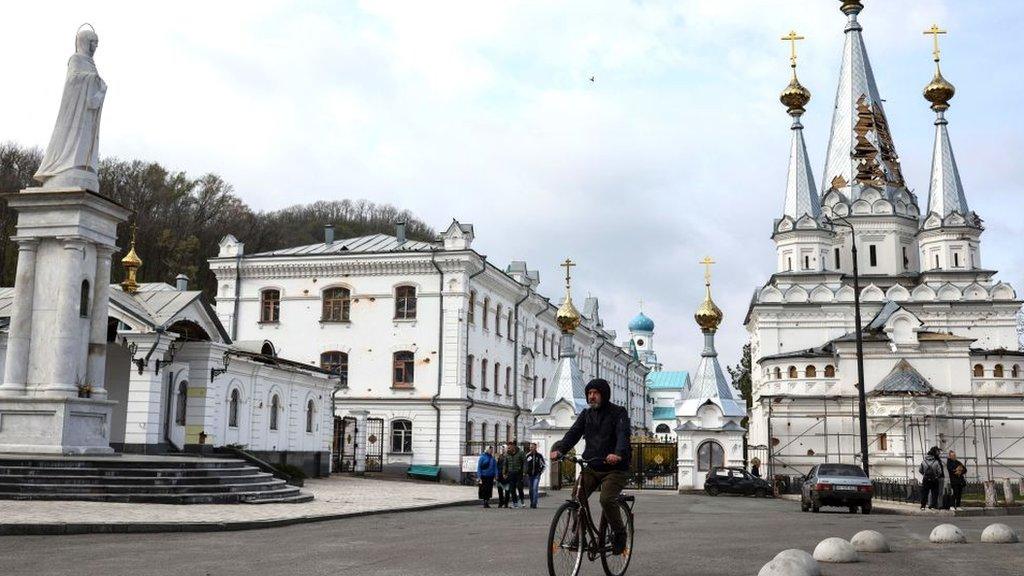Ukraine war: What might tip the balance?
- Published
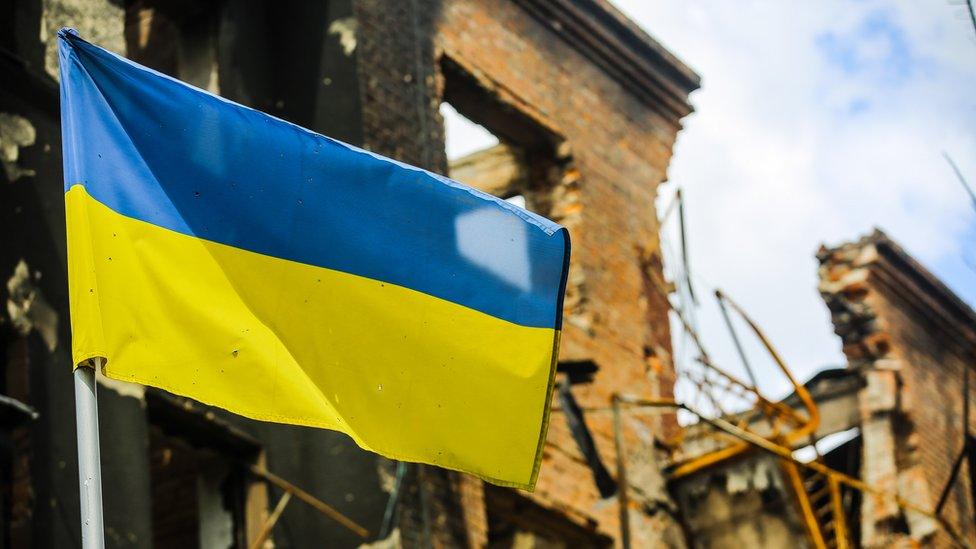
The war isn't likely to be over any time soon, and both military and economic factors will be decisive
Russia's war in Ukraine has become an increasingly grinding and bloody affair, with each side wearing the other down. Both claim to have made recent gains. But they've also suffered setbacks.
Overall, Russia is still the dominant force and has significant military might - but there has been no swift victory as planned. Here, we take a closer look at some of the things which could tilt the outcome in favour of either party.
Gains and losses
In the north, a Ukrainian counter-offensive has successfully pushed back Russian forces from the city of Kharkiv. In the south, Russia has all but cleared out the final pockets of resistance in the port city of Mariupol. Both have been costly in terms of military and civilian casualties, but neither is likely to prove decisive.
What's happened in Mariupol and Kharkiv highlights the ebb and flow of this conflict. That pattern of costly gains and losses is now being repeated in the east of the country.
Russia has been making small but steady advances in the Donbas - the renewed focus of its offensive. But it's also suffered setbacks - as highlighted by the destruction earlier this month of dozens of Russian armoured vehicles trying to cross the Siversky Donets river.


Russia's advantage - artillery
In the east, each side is exchanging heavy, grinding blows using artillery. Ben Barry, a former British Army brigadier who is now with the International Institute for Strategic Studies, says that will continue to be the case in the battle of the Donbas.
He predicts artillery will be the main cause of casualties on both sides for weeks and months to come. Western officials have highlighted significant Russian losses, but they have been less willing to give estimates of Ukrainian casualties.
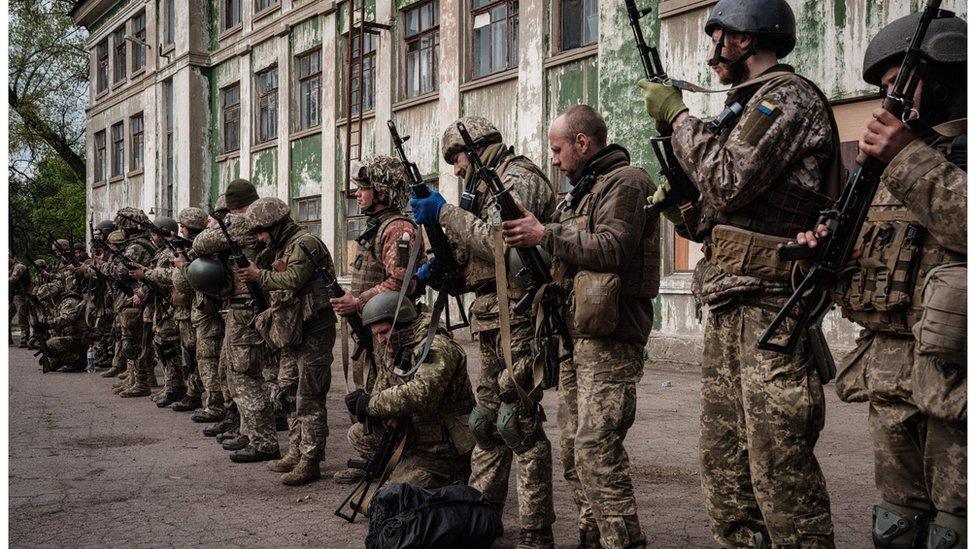
Ukraine remains outgunned, despite military support from the West
Ukraine is now receiving Western-supplied heavy weapons - including US M777 howitzers. It has also been sent counter-artillery radar systems - to help find and target Russia's artillery lines. But Ukraine is still outgunned.
Tactics
Russia has been using its artillery and rocket launchers to tie down Ukrainian forces who are dug in - along well prepared defensive lines. Russia has been pressing from two main directions - from Izyum in the north and from the west around the city of Severedonetsk. They have made limited advances in both directions.
Brig Barry says it appears that Russia is "trying to bleed Ukraine dry" by forcing it to concentrate its forces at key points, which can then be targeted by its artillery. Military analysts believe Ukraine is likely to have suffered significant casualties as a result.
However, he says Ukraine will still be able to use urban areas in the Donbas to slow down Russia's advances. Fighting in town and cities, as has been shown throughout this war, favours the defender.
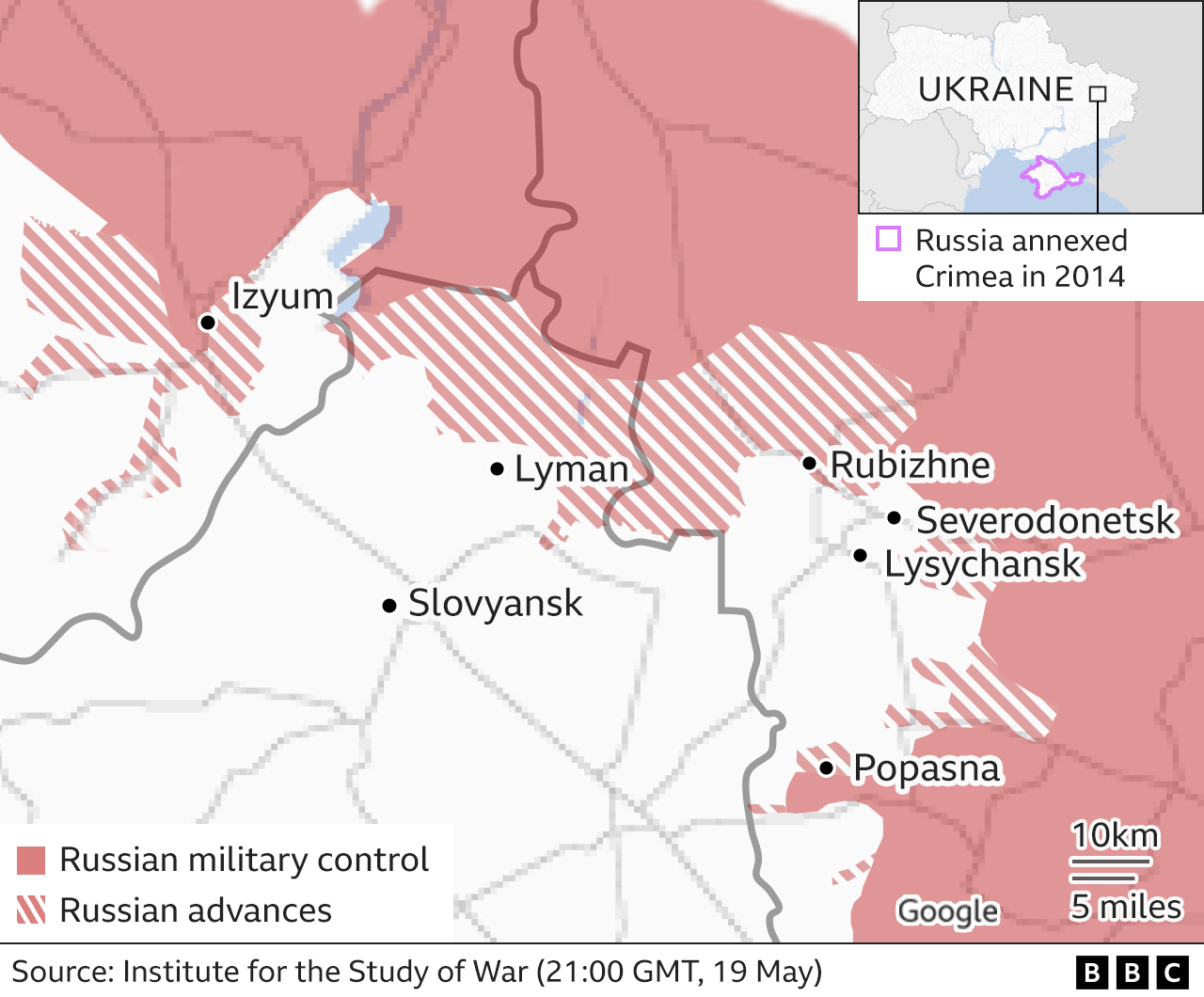

Once again, as in Mariupol, Russia is likely to try to grind resistance down - with the now familiar pattern of using mass artillery strikes until there remains little to defend. Ukraine's President Zelensky has already said Ukraine's eastern Donbas region has been "completely destroyed" and has described life there as "hell". It's going to get worse.
Russia's 'Frankenstein forces'
Military experts though still believe that Russia lacks the number of troops it needs to make significant advances in the east. Redeploying forces from the fight in Kharkiv and Mariupol is unlikely to make a difference.
Jack Watling, of the Royal United Services Institute, says Russia is still short of manpower and in particular infantry. Russia has tried to reconstruct and combine some of its already battered units - dubbed "Frankenstein's Forces".
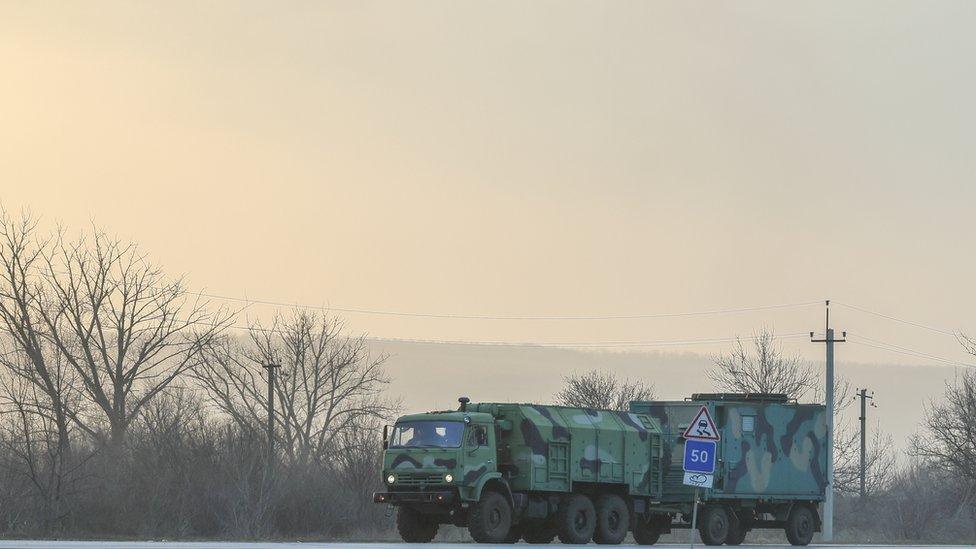
Experts believe Russia does not have enough troops to make major advances in the east
Unit cohesion and morale of tired and depleted units is likely to be poor. A recent UK Ministry of Defence intelligence assessment concluded that Russian commanders were facing pressure to achieve results quickly and as a result were likely to redistribute forces without adequate preparation.
The ministry said that risked "further attrition". It is already claimed that Russia has already lost around a third of its original invasion force - an estimate that includes killed and wounded troops as well as equipment destroyed or damaged.
Mr Watling says Russia is trying to address these shortages - including mobilising reserves who are over 40 years old and offering short-term contracts to fill its ranks. But training and rebuilding an army takes time.
Russia has also proved vulnerable to Ukrainian attacks on its supply lines. But Ukraine's capacity to do this is likely to be limited with the bulk of its forces tied down in defensive positions.
The long war
No one thinks this war will be over quickly. It's not yet a stalemate. Russia is making advances - but very slowly. But the outcome of this war is unlikely to depend on military might alone.
Mr Watling says Russia is also pursuing economic and political levers to inflict as much damage on Ukraine as possible. While Russia's economy is taking a hit from Western sanctions, Ukraine's is likely to suffer even more.
Russia's GDP is expected to shrink by 12% over the next year, but Ukraine's GDP could fall by 50%. Russia's blockade of the Black Sea is causing significant damage.
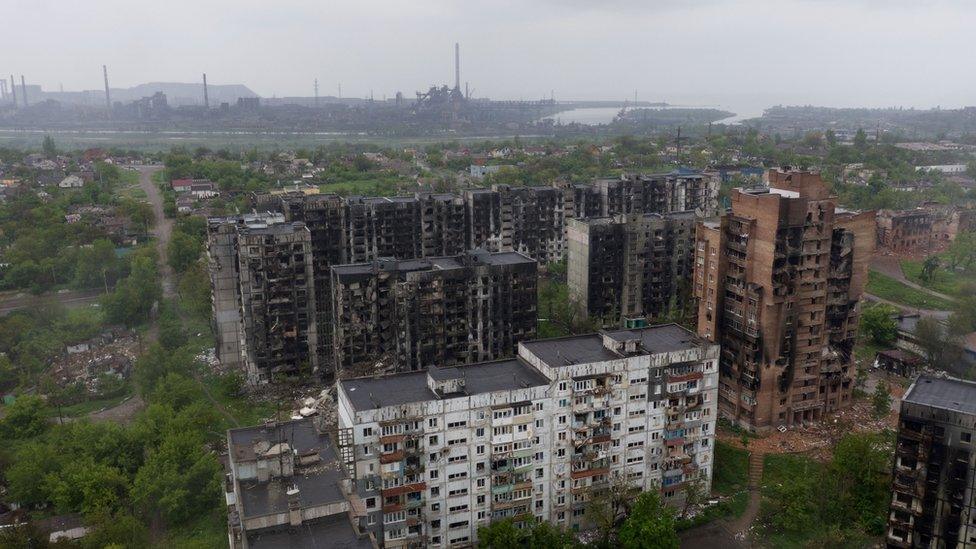
Ukraine's economy has taken a battering, and Western support could prove crucial
Mr Watling says continuing Western economic, as well as military, support could prove crucial. Will the public's interest in the war wane the longer it goes on - just as it did after 2014 when Russia annexed Crimea and Russian-backed separatists first seized parts of the Donbas?
Western governments now also have to worry about their own domestic challenges, including rising inflation, gas and oil prices and a cost of living crisis - caused in part by the war.
When winter approaches it will be harder for armies to fight. It may also prove more difficult for the world to weather an economic storm.

War in Ukraine: More coverage
WAR CRIMES TRIAL: Widow confronts Russian soldier
ANALYSIS: The spy war within the war
FRONTLINE: Pinned down by Russian fire in key village
READ MORE: Full coverage of the crisis, external
Related topics
- Published17 May 2022

- Published25 April 2022

- Published18 April 2022
